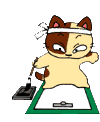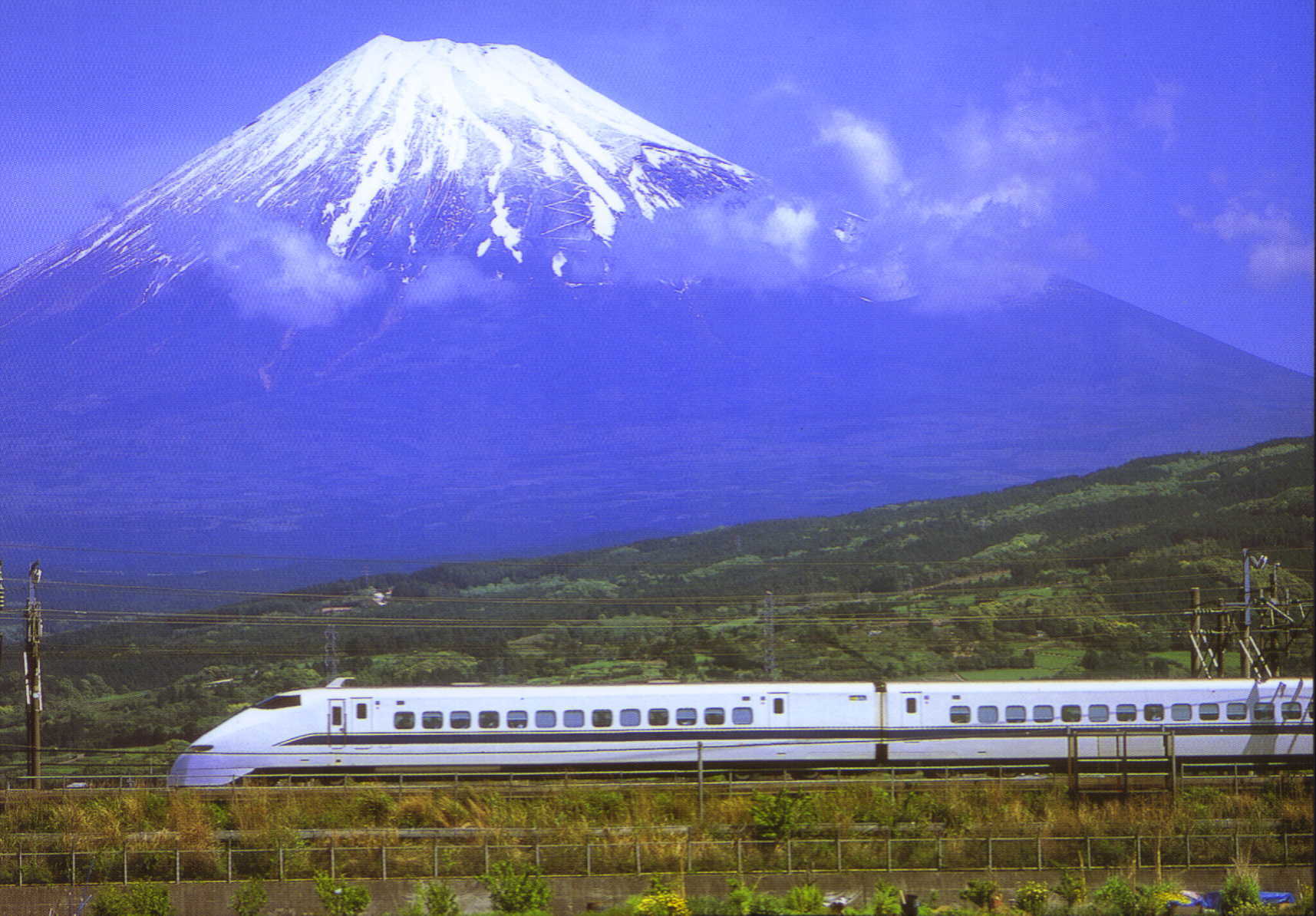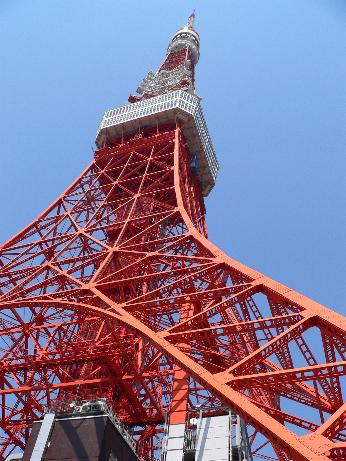
Japan
March 24-30, 2005

 |
Reunion in Japan March 24-30, 2005 |
 |
My dad was a navigator with Japan Airlines back in 1969 and he decided that being based in Tokyo made for a long commute so we packed up, sold the house and moved to just outside of Tachikawa Air Force Base about 20 miles from Tokyo. During the two years we lived there, I attended ninth and tenth grades at Yamato High School, a U.S. Department of Defense school for military and civilian dependants.
While living there, we didn't do a lot of traveling within Japan and I have always thought about going back. The one thing that kept me from returning was the fact that Tokyo is probably the most expensive city in the world even when you don't factor in the drop in the dollar - yen exchange rate. When we left Japan in 1971, $1.00 equaled ¥360. Today $1.00 equals ¥108.
I had recently watched two movies about Japan: "Lost in Translation" and "The Last Samurai" and they really started me thinking about going back to Japan. Thanks to the internet, I have been in touch with several old friends from Japan and even attended an all-year Yamato High School reunion in Las Vegas. Last year, a Yamato student planned a trip to Japan and decided to invite everyone who either went to school or was stationed in Japan and their friends, spouses or families to go along and make the trip a Tachikawa AFB/Yamato High School reunion trip.
The trip was a package deal put together by Singapore Airlines and included round trip air from Los Angeles to Tokyo, five nights in the Tokyo Hilton Hotel, transfers between the hotel and airport (a 90 minute drive in good traffic) and a half-day city tour of Tokyo. Since the trip was in the off season, the price was too good to pass up so I decided to go. As it turned out, about 80 people went on the trip and most of them attended another high school in Japan called Chofu.
 Imperial Palace Gate |
I flew from Sacramento to Los Angeles and then caught the flight to Tokyo. The flight was 11½ hours and the woman in front of me rested her seat back against my knees the whole trip (I wasn't able to get an exit or bulkhead seat) so I wasn't able to sleep at all. At least the B-747-400 had private video screens for each seat with a choice of 60 movies and TV shows that you could start, pause and stop just like with a VCR so I watched several movies which made the time go by faster. |
We arrived at the hotel around 9:30 p.m. local time (4:30 a.m. the previous day California time) and I went right to bed. The next day, we had the city tour which included going up to the observation deck of the Tokyo Tower (rebuilt since Godzilla destroyed it), the Meiji Shinto Shrine and a walk through the East Garden of the Imperial Palace. Along the way, we saw the National Guest House, the main gate, walls and moat of the Imperial Palace, the Diet Building, the Ginza and several other sites.
When we visited the East Garden in the Imperial Palace, we were each given a chit upon entry. Our guide warned us that we had to turn in the chit when we exited the gate and if we lost the chit, we would have to stay in the garden forever. She then got serious and said it was very important to not lose the chit.
|
When we were exiting the garden, one woman in our group could not find her chit and they were really not going to let her leave. Fortunately for her, she had left the chit in a rest room and found it so she didn't have to live in the garden for the rest of her life. The rest of the day was free and I walked a few blocks to the Tokyo Metropolitan Government Office building and went up to the twin observation decks on the 45th floors for a great view of the Shinjuku district of Tokyo which has many skyscrapers. That night, two Yamato classmates and I took the subway to the Ginza shopping district. At night the Ginza is all lit up by neon signs kind of like Times Square in New York or Piccadilly Circus in London. We found a Pachinko Parlor and it seems Pachinko (a sort of pinball game where you can win prizes) is still very popular in Japan. |
 Tokyo Tower |
The subway and trains in Tokyo are easy to navigate. The ticket machines have instructions in English and the station signs are in English as well as Japanese characters. Since the Sarin gas attack in 1995, there are no garbage cans in the subways and smoking is not allowed. I was totally amazed that I did not see any garbage or cigarette butts on the ground even in the Shinjuku station, the busiest station in Tokyo handling four million passengers a day. I don't remember everything being so clean when I was there 35 years earlier.
The next morning, I walked around a park near our hotel and in the afternoon, a group of us Yamato and Tachikawa people took the train to Tachikawa for a reunion party and to see what is left of the base (it closed and the land was turned over to the Japanese in 1977) and maybe find the houses some of us lived in off base - that was my big goal.
When we exited the train station in Tachikawa, most of us were surprised by how much the city had grown since we last saw it. We walked to the area where the main gate of the base was located and some people could actually recognize landmarks. Part of the base was made into a beautiful park called Showa Kinen Park. We walked to the park and then split up. Some of us wanted to find our old houses and other wanted to find anything left from the base.
Armed with old photographs of my house and an old map of the base, I got a taxi and one of the women in our group who speaks fluent Japanese explained to the taxi driver that I wanted to locate the house I lived in 35 years ago. I didn't even know if the house still existed but I had come all this way so I was determined to find it. I knew the house was located just outside a base gate called the Laundry gate named after the base laundry located nearby. Fortunately, the old base perimeter fence located on that side of the base is still there and though the gate is gone, there is a bus stop there called the Laundry Gate bus stop. My taxi driver knew where that was so he took me there. I knew I could find the location of my house from the old gate area and even though there were many more buildings and houses now built up around the house, I managed to locate it. It was quite an emotional experience seeing the house I lived in so many years ago and so far away from my real home and a flood of memories, some good and some not-so-good entered my brain. I ran up a large taxi fare but didn't care as I accomplished one goal of this trip.
 My House 1969 |
 My House 2005 |
The group agreed to meet back at a McDonalds near the train station and then we walked to a restaurant owned by a friend of one of the people in our group. The restaurant was normally closed on Sunday nights but they opened it just for our reunion party. They had an all-you-can eat (and drink) party complete with the favorite Japanese party activity, Karaoke. We all got re-acquainted with each other and I met some really interesting people who attended Yamato including some who now live in Japan. It was a great party!
The next day was not so great but I made the best of it. During the two years I lived in Japan, I could see the snow-covered Mt. Fuji, at 3,776m (12,389 feet), the tallest mountain in Japan from Tachikawa AFB on many clear winter days. There was too much smog in the summer to see it. My family and I drove to Mt. Fuji once in two years but it was rainy and we couldn't see it at all. So one of my goals on this trip was to go to Mt. Fuji. I booked a tour online before leaving and since the trip to Tachikawa was planned for Sunday, I booked the Mt. Fuji tour for Monday.
 The Ginza |
The weather was sunny and clear the first two days but on Monday my luck ran out and it rained. The Mt. Fuji tour by bus took me right to the 1,200 meter point of the mountain but it was actually snowing on the mountain so Fuji-san wasn't visible even from that close. The tour included a stop at the Buddhist Peace Pagoda, a boat ride on Lake Ashi and an aerial cableway ride up on Mt. Komagatake in Hakone National Park. I was hoping to get fantastic views of Fuji-san from the lake and aerial cableway but that didn't happen. In fact at the top station on Mt. Komagatake, I couldn't see more than 20 feet as we were in the clouds. The day before would have been perfect but that is the chance you take when you travel. |
I booked the option of taking the Shinkansen (Bullet Train) back to Tokyo as I never rode on it when I lived there. When I was waiting on the platform for my train, a few trains came through the station without stopping (or slowing down) and they were just a blur whizzing by. The trip took only about 45 minutes at 233 kph (146 mph) (some go even faster) and I was amazed how smooth it was - I didn't even feel that I was moving when I wasn't looking out the window.
The next day, I took the train and subway to several districts in Tokyo, checking out the New Sanno Hotel (for active/retired U.S. military personnel) and the Hard Rock Café, watching people (a few "punks" were particularly interesting) and buying gifts.
|
As I mentioned earlier, I had always shied away from going back to Japan because of the high prices I had heard about but I found out that if you look around, you can eat fairly cheaply. Of course the Hilton where I stayed charged ¥3,360 ($31.00) for the breakfast buffet and a beer in the bar was ¥1,200 ($11.00) but I found Gyoza, my favorite Japanese food for ¥300 ($2.78), a beef and rice dish for ¥400 ($3.70) and a large Kiren beer for ¥400 in a small restaurant at the Shinjuku train station. An average subway ride that I took cost ¥160 ($1.48) and the observation decks in the Tokyo Metropolitan Government Office building were free. |
 Stylin' On |
What I really like about Japan is the culture is so different from ours. Some observations:
· The Japanese are almost too polite saying "arigato gozai-mass" (thank you very much) several times when you leave a store or restaurant. I also don't recall hearing a single car horn the whole time I was there.
· Not all the taxi drivers wear white gloves like they used to but the passenger doors of the cabs still open automatically for you.
· In department stores, women stand at the escalators with cloths to wipe the hand rails and people still wear masks over their nose and mouth to keep from getting sick or spreading their own germs.
· I already mentioned how clean the subways are. I also noticed that there wasn't any graffiti painted on the subway cars. I remember the New York City subways had every inch inside and outside covered with graffiti.
· I remember when I lived in Japan, people would stare at me on the subways as I was blond and taller than most Japanese. On this trip, I didn't notice anyone staring at me so westerners must not be an oddity anymore.
· The traffic cops are fun to watch employing unique styles to control traffic and everyone actually follows their directions.
· Thirty-five years ago, many store clerks still used abacuses to total your bill but today, everything is electronic.
· I don't think I ever did master chop sticks but I didn't starve.
Several people in our group talked about going back next year if a similar deal is offered. If I go back, I plan to see Kyoto which is known for its palaces, temples and shrines. I'd probably go a few weeks later in the year when the cherry blossoms are more prevalent. And of course, I'll try to see the ever elusive Fuji-san again. I know it's there!
